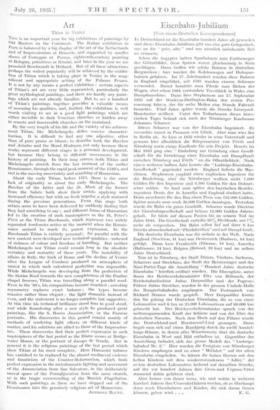Art
Titian in Venice This is an important year for big exhibitions of paintings by Old Masters on the Continent. The Italian exhibition in Paris is balanced by a big display of the art of the Netherlands and of Impressionism at Brussels, and supported by smaller shows of Correggio at Parma, eighteenth-century painting at Bologna, primitives at Rimini, and later in the year we are promised Rembrandt in Holland. But of all these attractions perhaps the widest popularity will be achieved by the exhibi- tion of Titian which is taking place in Venice in the mag- nificent and appropriate setting of the Palazzo Pesaro. It is •not• by any means a perfect exhibition :"certain aspects of Titian's• art are very little represented, particularly the , great mythological paintings, and there are hardly any paint- ings which are not already familiar. But to see a hundred of Titian's paintings together provides a valuable means of assessing his qualities, and, further, the exhibition is well worth visiting to see in a, good light paintings which are either invisible in dark Venetian churches or hidden away in remote and inaccessible churches on the mainland.
By the very length of his life and the variety, of his achieve- ment Titian, like Michelangelo, defies concise character- ization. It is difficult to find any one adjective, other than of pure praise or blame, to describe both the Bacchus and Ariadne and the Mond Madonna, not only because these works represent different stages in, a personal development, but because they belong to different movements in the .history of painting. In their long careers. both Titian and Michelangelo stretch from the last moment of the earlier ,Renaissance, through the rapid peak moment of the 1520's, and end in the moving uncertainty and searching of Mannerism.
About the early Titian, before ,1515, there is the same lack of originality , as about the early Michelangelo. The Bacchus of the latter, and the ,St. Mark of the former from the Salute both show their artists applying with increased efficiency but with no fresh impulse a style matured during the previous generations. From this stage both artists seem to have been delivered by suddenly finding that they had something to say . and different forms of Humanism led to the creation of such masterpieces as the St. Peter's Arleta or the Titian Bacchanals, which represent two widely separated tendencies active at the moment when the Renais- sance' seemed to reach its purest expression. In the pgultanal,s Titian is entirely personal ; for parallel with the new content were developed new technical qualities—unheard of richness of colour and freedom of handling. But neither Michelangelo nor Titian could remain long in the absolute certainty and maturity of these years. The instability of affairs in Italy, the Sack of Rome and the decline of Venice Lifter the League of Cambrai produced an atmosphere of unrest in which such calculated perfection was impossible. While Michelangelo was developing from the perfection of the Sistine Roof towards .the new completeness of the Pauline chapel. frescoes, Titian was travelling along a parallel road. Even in the '80's, his compositions become troubled ; arresting asymmetry replaces exact balance ; the types become massive rather than elegant ; the light dramatic instead of even, and the statement is no longer complete but suggestive. At this time his technical brilliance stood him in good stead, and while floundering after a new style he produced great paintings, like the S. Rocco Annunciation, or the Farnese portraits. , His discoveries in this period consist mainly of methods of rendering light effects on different kinds of matter, and his solutions are allied to those of the Impression- ists. These discoveries find their perfect expression in such, masterpieces of the last period as the Diana scenes at Bridge- water House, or the portrait of Jacopo de Strada. But in general it is the religious paintings of the last period which show Titian at his most complete. , Here Humanist balance has vanished to be replaced by the, almost mediaeval violence and fanaticism of the Counter-Reformation, which finds Perfect expression in the melodramatic lighting and movement. of the Annunciation • from San Salvatore, in the deliberately unreal space of the Transfiguration from the same church, or in the tragic overcrowding of the Munich Flagellation. With such paintings as these we have stepped out of the Renaissance into the genuinely religious art of Mannerism.
ANT11ONY BLUNT.





































 Previous page
Previous page